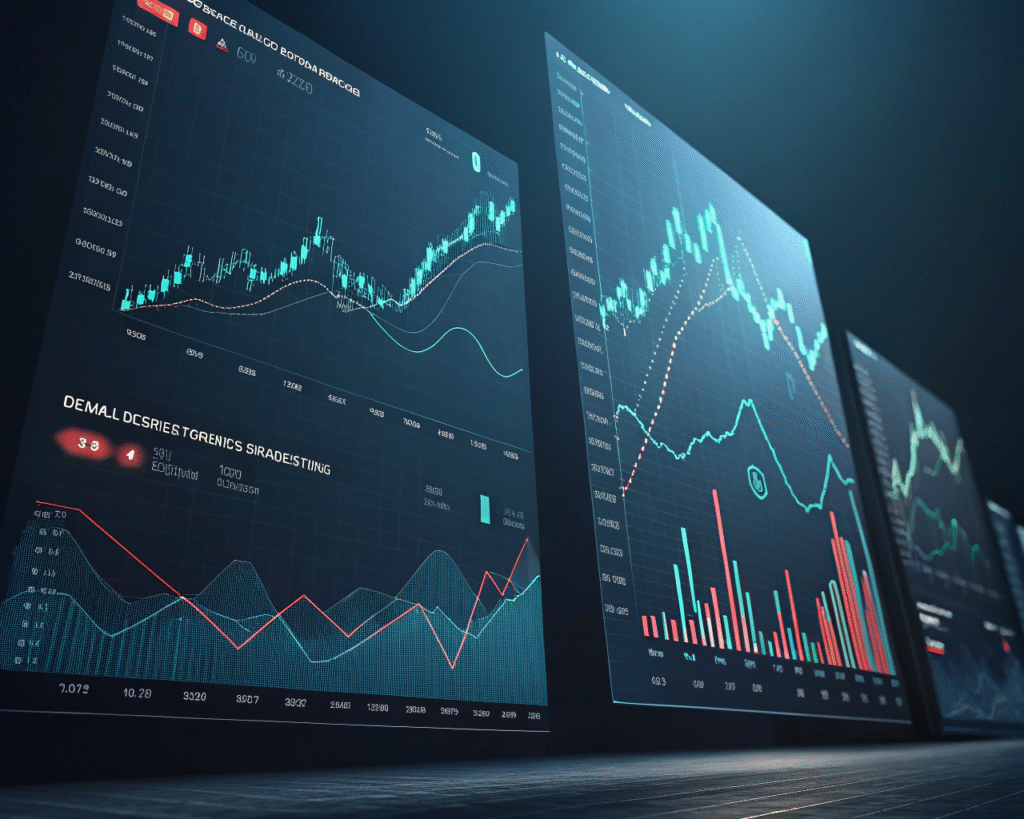
In the dynamic world of trading, decision-making hinges on timely, data-backed insights. Trade signals—automated or manual cues to buy or sell—play a critical role in modern strategies. Understanding their foundation, variations, and strategic application can dramatically sharpen your trading edge, reduce noise, and improve risk-adjusted outcomes.
Understanding Trade Signals
Definition and Core Concept
A trade signal is a trigger for action, typically to buy or sell a security, based on predefined criteria. These criteria stem from technical indicators, fundamental data, or a combination of both. Trade signals distill market data into actionable insights, helping traders identify opportunities aligned with their strategies.
How Trade Signals Work in Practice
Signals are generated by systems or analysts interpreting market movements. They might flag a potential breakout, trend reversal, or overbought/oversold condition. Once identified, the signal prompts the trader to act or review. Execution can be automated or discretionary, depending on setup.
Common Sources and Delivery Methods
Signals are commonly sourced through:
- Trading platforms and charting tools
- Third-party signal providers
- Institutional research desks
- Proprietary algorithmic models
Delivery methods include:
- In-platform notifications
- Email alerts
- SMS or mobile app notifications
- API integrations with trading bots
Types of Trade Signals in Modern Trading
Technical Analysis-Based Signals
These are derived from indicators like moving averages, RSI, MACD, Bollinger Bands, and Fibonacci retracements. They aim to detect trends, momentum shifts, and volatility changes.
Fundamental Analysis Signals
Based on economic indicators, earnings reports, interest rate changes, or macroeconomic trends. For example, a central bank’s interest rate hike could signal strength in that currency.
Sentiment and News-Based Signals
Sentiment indicators gauge crowd psychology—using tools like the Commitment of Traders (COT) report, social media sentiment, or real-time news sentiment engines to forecast reactions.
Automated vs. Manual Signals
| Type | Advantages | Limitations |
| Automated | Speed, objectivity, scale | Can misinterpret market context |
| Manual | Flexibility, intuition | Time-consuming, emotionally biased |
Strategic Benefits of Using Trade Signals
Improved Market Timing and Precision
Signals filter market noise and help traders enter and exit positions with better timing, often reducing slippage and drawdowns.
Enhanced Decision-Making Confidence
With reliable signals, traders can avoid second-guessing and stick to structured processes, minimizing impulsive decisions.
Time-Saving and Consistency Boost
Automated signals allow for efficient portfolio monitoring, freeing up time while maintaining a consistent strategy execution.
Potential Risks and Common Pitfalls
Signal Lag and Delayed Execution
Some indicators are lagging, meaning by the time the signal triggers, the opportunity might be fading—especially in fast-moving markets.
Market Noise and False Positives
Markets are noisy. Not every breakout or crossover leads to a sustained trend. False signals can erode capital if unchecked.
Over-Reliance on Automated Alerts
Over-dependence on systems without understanding the rationale behind them can lead to poor risk management.
Lack of Strategy Alignment
Using generic signals that don’t align with your risk appetite, asset focus, or time horizon often results in inconsistent performance.
How to Choose a Reliable Signal Provider
Proven Track Record and Historical Accuracy
Review past performance data, ideally third-party verified. Consistency across market cycles is key.
Transparency in Methodology
Top-tier providers clearly explain how signals are generated, whether algorithmically, manually, or via hybrid systems.
Community Reputation and User Feedback
Check trading forums, independent reviews, and client testimonials to assess credibility.
Pricing Models and Value Proposition
Evaluate whether the cost of signals aligns with the value offered. Some providers offer tiered pricing based on complexity or assets covered.
Risk Controls and Capital Management Support
A quality provider often offers guidance on stop-loss levels, position sizing, and risk-to-reward ratios to support disciplined trading.
Integrating Trade Signals into Your Personal Strategy
Defining Your Goals and Trading Style
Your strategy should reflect your capital base, time availability, and risk tolerance. Swing traders use signals differently from scalpers or long-term investors.
Risk-Reward Calibration and Portfolio Fit
Only act on signals that match your desired reward-to-risk ratio. Balance exposure across different assets and strategies.
Testing, Monitoring, and Iterative Adjustments
Backtest signals on historical data. Track performance metrics and adjust your system based on empirical evidence.
Emotional Discipline and Strategic Patience
Signals reduce emotional interference but don’t eliminate it. A disciplined, rules-based approach ensures long-term sustainability.
Regulatory and Ethical Considerations
Regulated vs. Unregulated Signal Services
Prefer providers that operate under regulated frameworks (e.g., FCA, CySEC). Regulation increases transparency and recourse.
Compliance and Data Integrity
Ensure data feeds and signal algorithms comply with trading laws and avoid front-running or data manipulation.
Security, Accountability, and Transparency
Select platforms that offer data security, accountability in performance claims, and clear communication on system limitations.
Final Reflections on Trade Signals and Smart Strategy Building
Trade signals, when properly understood and implemented, can be powerful allies in a trader’s arsenal. They support discipline, reduce noise, and provide structure. However, they must be aligned with your strategy, tested thoroughly, and monitored continuously. With the right provider and a thoughtful integration approach, signals can elevate your trading from reactive to strategic.